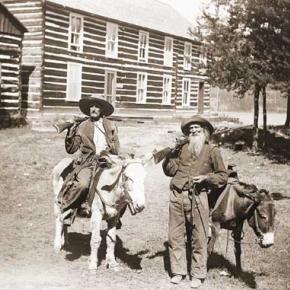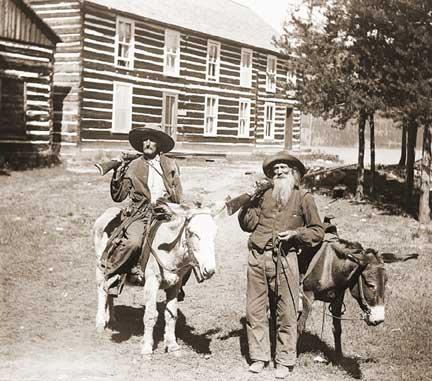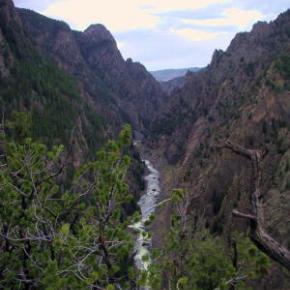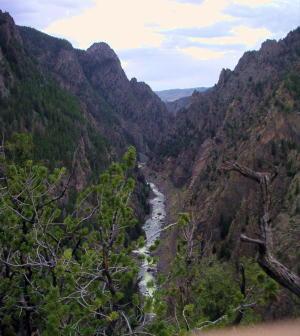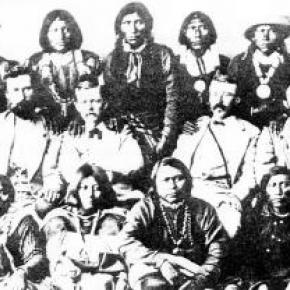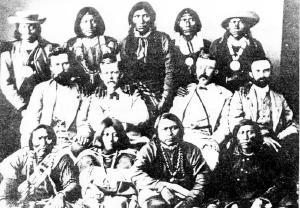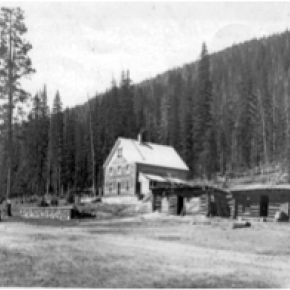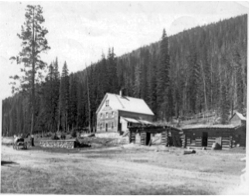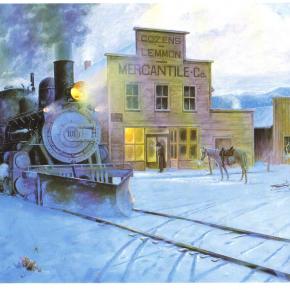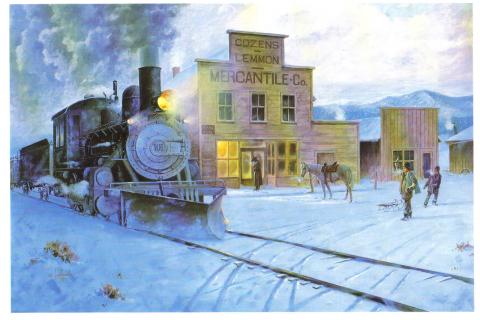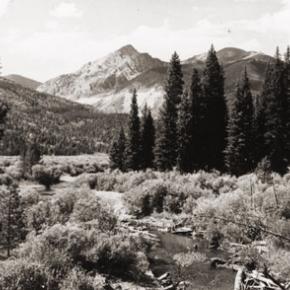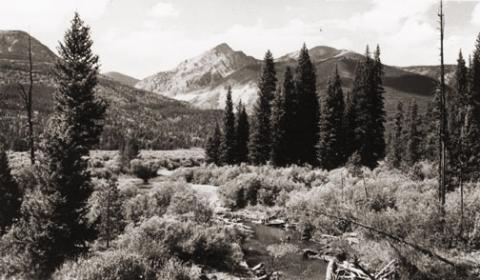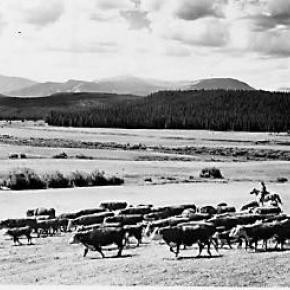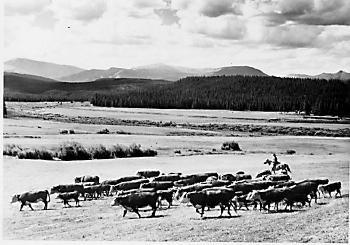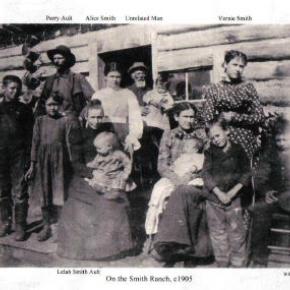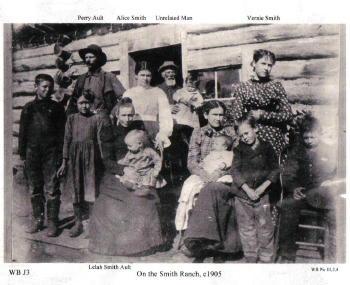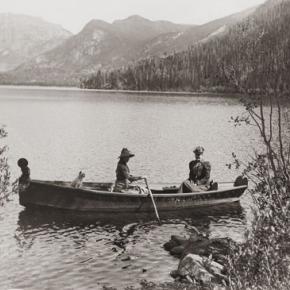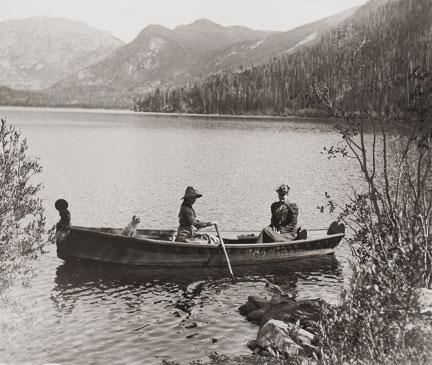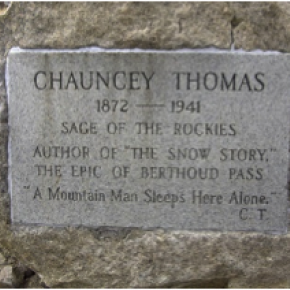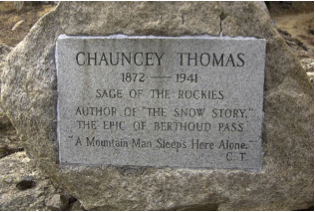Tales of Yesteryear Articles
| Welcome to the Modern World |
Welcome to the Modern World
Article contributed by Jean Miller Karl and Adella Just homesteaded on Pole Creek in the Fraser River Valley in 1896. Della was the daughter of Henry Lehman, who had, himself, homesteaded on the upper Grand River about 1880. Karl and Della worked hard, adding to their property until by the late twenties, they had the largest holding in the valley. This lovely ranch was where Snow Mountain Ranch is now, and their log home still stands there even today. Their several children homesteaded in their own rights. Della and her son Alfred had what is known as the Rowley homestead, (now part of the Y-Camp) as well as what currently is the Winter Park Highlands. Son Rudy and his wife Clarabelle ranched part of the original Just property on Pole Creek where they watched over his mother. Another daughter married one of the Daxton boys and their spread was on Crooked Creek. Until the 1950's, just beyond Tabernash on the north side of the highway at the foot of Winter Park Highlands stood one of the original log homes of this family. In fact, this house appeared in a 1952 movie called "On Dangerous Ground", starring Ida Lupino, Robert Ryan, and Ward Bond. It was torn down some years later and a modern house built there. Life was hard for ranching pioneers, perhaps hardest of all for the women, for they worked in the fields and of course, did all the work of the house as well as much of the garden work. Little Della raked hay during the season, hoed gardens, hauled water, fished, sewed, and cooked. She was tough. The bright spots were when rare visitors stopped by, or as the population increased, dances were held in one town or another. It was a given that the Just home, like those of most pioneers, had no indoor plumbing. Nobody expected it and nobody complained. However, by 1957, Della Just was in her nineties. Karl was long gone. Her children decided that she should have indoor plumbing after all these years, and they heard that young Dwight Miller had a brand new backhoe. When they called, Dwight was pleased at the thought of doing such a useful job. He brought his machine out to the ranch and prepared to get to work. He discovered, however, that there was disagreement on this bright idea. Della thought the notion was silly. "I've lived all these years with an outhouse and I don't see any reason at all to change!" Back in those days, temperatures were very much colder than those currently expected. Forty and fifty degrees below zero were not unusual at all. But that old lady didn't mind this. (No doubt, there were chamber pots available for the worst weather.) Della's children, themselves no longer young, won out, and Dwight dug the trenches and the septic tank hole and laid the pipes. We never heard whether Della got used to such luxury or not, but we know that Rudy and Clarabelle agreed that moving into the modern world was a good idea! |
| “Rooster” When I Knew Him |
“Rooster” When I Knew Him
By George Mitchell When I was a very young boy living in Parshall, I was privileged to know one of the most colorful characters of early Grand County history. His name was Henry “Rooster” Wilson. Most of what I remember about “Rooster” has been from his personal contact with my parents and from stories told over and over as the years have gone by. He was born in Ft. Sill, OK in 1881 of part Cherokee ancestry. Shortly thereafter, the family moved to Ft. Steele, WY. He spent his younger years working as a cow-puncher in Wyoming and Colorado. Rooster claimed to be one of Teddy Roosevelt’s packers when he hunted out of Glenwood Springs. When he came into Middle Park, he rode for the Curtis Ranch on the Williams Fork. Later, he became one of the early game wardens for this area. He always rode a white horse (all his horses and dogs were named Major). Although he never said it, most people thought he used a white horse to be conspicuous so that he didn’t embarrass the local ranchers or his friends by catching them with illegal meat. One time he rode into the yard at the McMillan ranch (aka the Barney Day ranch about 4 miles west of Parshall on the Colorado River) just at supper time. The women had venison frying on the stove. My mother quickly stuck the meat into the oven and brought out some ham to cook. Rooster had supper (in those days visitors were always fed), gossiped awhile and started to leave. As he went out the door, he turned and said, “You can take that meat out of the oven now”, and rode away. Rooster was one of the best ropers in the area. Whenever folks had a round-up or worked cattle they asked Rooster to help. I heard him tell about a time he and someone else caught a bear in the open sagebrush on the Company Ranch. They roped it and with two ropes on it were able to keep it away from the horses. Most horses go crazy around a bear. Like the proverbial “bear by the tail” they couldn’t turn it loose. They finally had to shoot it to get their ropes back. Rooster couldn’t talk without swearing, but he was a gentle man and, although he never married, he loved kids. At the local dances he was often put in charge of the babies and younger kids while the parents danced. As automobiles became more popular Rooster got a Dodge touring car. He misjudged one of the turns on the Hot Sulphur Springs/Parshall divide and put the car over the bank. The turn is nicknamed “Dodge Turn” because several other Dodge cars went off the same turn. One day I was playing behind the Parshall Hotel, which my parents were running at the time. There was a good sized post by the well that served as a hitching post. On this day Rooster had been up at the post office and he and his old Dodge came down to the Hotel for lunch. He wasn’t going fast but as he neared the post he reared back on the steering wheel and yelled “Whoa, Dammit.” However, he failed to use the brakes so the car banged into the post. Neither the post nor the stout old Dodge bumper were hurt, but Rooster snorted and cussed his way to the back door. His one big fault was alcohol. This was during prohibition, but there was always some available. When my mother knew Rooster was going to be around she had to hide the vanilla and lemon extract because he would sneak into the cupboard and drink them for the alcohol content. One of my favorite stories is again while he was an overnight guest at the Hotel. When he stayed overnight he always wanted the room over the kitchen which got a little heat from downstairs. He had gone to bed early and later my father and Ray Black came into the kitchen to get warm and to discuss how to hide the meat from a spike bull they had just poached. They argued awhile and got warm and went out to finish their butchering. When Dad came back in mother told him Rooster was upstairs. Dad always had a guilt complex so he was really sweating. Next morning Rooster came snorting and cussing downstairs for breakfast. All he ever said was, “Gawd, John, you guys sure make a lot of noise down here.” Rooster had some ground and a nice cabin just west of the Lysander Williams place which is now the Dan Hilty ranch on the Williams Fork. The original road to the ranch crossed Battle Creek about 1/4 mi. above and came down on the west side. The road across the creek was treacherous and one day Rooster only made it as far as a deep Beaver pond in his old Dodge. It took a 4 horse hitch to pull him out of that one. How did “Rooster” get his nickname? There are two theories. When he was ready to retire to bed after a full day’s work and conversation around the pot-bellied stove, he usually remarked, Well, I guess I’ll go to roost.” The other theory was that while he worked as a wrangler, he was the first to get out of bed so he could round up the horses for the other cow punchers. Then he would roust everybody out of bed at that early hour. Rooster died in 1934 of natural causes and is buried in the Hot Sulphur Springs Cemetery.
|
- ‹ previous
- 2 of 2








